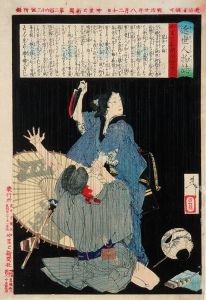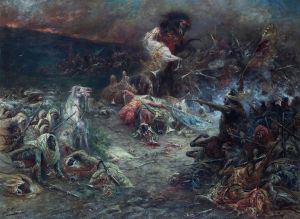
The Apotheosis of War
A hand-painted replica of Vasily Vereshchagin’s masterpiece The Apotheosis of War, meticulously crafted by professional artists to capture the true essence of the original. Each piece is created with museum-quality canvas and rare mineral pigments, carefully painted by experienced artists with delicate brushstrokes and rich, layered colors to perfectly recreate the texture of the original artwork. Unlike machine-printed reproductions, this hand-painted version brings the painting to life, infused with the artist’s emotions and skill in every stroke. Whether for personal collection or home decoration, it instantly elevates the artistic atmosphere of any space.
The Apotheosis of War is a painting created in 1871 by Russian artist Vasily Vereshchagin, one of the most prominent war painters of the 19th century. The artwork is an oil on canvas and is part of Vereshchagin's series of works that critically examine the brutality and consequences of war. It is currently housed in the State Tretyakov Gallery in Moscow, Russia.
The painting depicts a stark and haunting scene: a pyramid of human skulls set against a barren, desolate landscape. The ground is dry and cracked, and the horizon is marked by a lifeless, yellowish sky, evoking a sense of desolation and despair. The composition is devoid of any living beings, emphasizing the aftermath of violence and the absence of life. The stark imagery is both symbolic and literal, serving as a powerful anti-war statement.
Vereshchagin inscribed the painting with the dedication "Dedicated to all great conquerors, past, present, and to come," underscoring his condemnation of the glorification of war and conquest. This dedication reflects the artist's deeply critical stance toward the romanticization of military victories and the human cost of such endeavors. The pyramid of skulls is believed to have been inspired by historical accounts of similar structures created during wartime, particularly in Central Asia, where Vereshchagin traveled extensively and witnessed the devastating effects of conflict.
The painting is notable for its unflinching realism and its departure from traditional depictions of war, which often glorified heroism and victory. Instead, Vereshchagin focused on the suffering, destruction, and futility that accompany armed conflict. This approach was controversial during his time, as it challenged prevailing attitudes toward war and imperialism. Vereshchagin's works, including The Apotheosis of War, were often met with mixed reactions, with some praising his courage and honesty, while others criticized him for what they perceived as unpatriotic or overly bleak portrayals.
The Apotheosis of War remains one of Vereshchagin's most famous and enduring works, widely regarded as a powerful anti-war statement. It continues to be studied and appreciated for its artistic merit and its poignant commentary on the human cost of war.


















